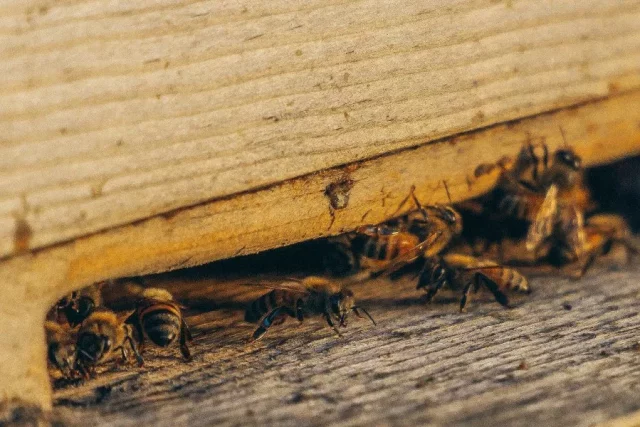Maintaining a safe, clean warehouse is essential for any business; so too is protecting against pests that can potentially cause extensive damage and put workers at risk. Along with the health hazards of vermin infestations come economic costs—unchecked pest activity can result in contaminated products, high repair expenses from wood-destroying insects, and an overall decline in customer satisfaction. To protect your business against unwanted visitors while keeping your property intact and healthy, it’s important to develop effective warehouse pest control strategies. In this blog post, we’ll discuss preventative measures you should take as well as management solutions once there is an existing issue with pests in the workplace.
Understand The Most Common Pests In Warehouses
When it comes to keeping a warehouse free from pests, it’s important to know what you’re up against. The most common culprits include rats, mice, cockroaches, and spiders. These pests can cause damage to products and equipment, and can even pose a threat to the health and safety of employees. Rats and mice can chew through packaging and contaminate food products, while cockroaches can spread bacteria and allergens. Spiders, while less harmful, can also cause issues by spinning webs and causing a mess. By understanding the habits and behaviors of these pests, warehouse owners and managers can take the necessary steps to keep their spaces clean and pest-free.
Inspect Your Warehouse Regularly To Identify Signs Of Infestations
As a warehouse owner or manager, the safety and protection of your stored products should always be a top priority. An infestation can cause serious damage and financial loss to your business. That’s why it’s crucial to conduct regular inspections of your warehouse to identify any signs of pest infestations. From beetles and rats to termites and cockroaches, these pesky critters can silently destroy your goods, causing irreparable harm to your reputation and bottom line. Regular check-ups can help you detect any signs of infestations early on and allow you to take the necessary steps to eliminate them before they wreak havoc on your business. So, inspect your warehouse regularly and safeguard your valuable inventory.
Hire A Professional To Reduce The Risk Of Pest Infestations
Pest infestations are one of the most frustrating problems warehouse owners can face. From ants marching across countertops to mice scurrying through walls, these unwelcome guests can cause damage to your property and pose health hazards to you and your family. When in need of pest control for the warehouse, it’s important to consider hiring a professional to help reduce the risk of this happening on a large scale because trying to exterminate pests on your own can often be ineffective and time-consuming. A qualified and experienced pest control expert will have the knowledge, tools, and treatments necessary to effectively eliminate pests and prevent them from returning. To help you look for professional pest control service that you can trust, visit glpestcontrol.ca, where experienced technicians use advanced techniques to eliminate pests and protect your property. With their help, you can enjoy a pest-free home and peace of mind.
Seal Any Cracks Or Crevices Around Windows And Doors
As the weather turns colder, many of us find ourselves spending more time indoors. Unfortunately, we’re not the only ones seeking refuge from the cold. Pests like mice, spiders, and cockroaches are always on the hunt for a warm place to nest, and they can easily find their way into your home through even the tiniest cracks and crevices. To keep these unwelcome guests out, it’s important to seal up any openings around your windows and doors. Not only will this help keep pests at bay, but it can also help improve your home’s energy efficiency by reducing drafts. So, grab a tube of caulk and spend a few hours sealing up those gaps – your home (and your wallet) will thank you!
Implement An Integrated Pest Management (IPM)
Controlling pests can be a never-ending battle, but implementing an Integrated Pest Management (IPM) program can provide a long-term solution. An IPM program takes a comprehensive approach to managing pests, including prevention, monitoring, and treatment. By focusing on prevention measures, such as improving sanitation and sealing entry points, you can reduce the likelihood of an infestation. Monitoring techniques, such as trapping and visual inspections, can help you detect pest problems early on. Finally, treatment methods, such as using pesticides or biological controls, can be employed as a last resort. By developing and implementing an IPM program, you can effectively control pests in the long term and maintain a pest-free environment.
Use Baits And Traps To Target Specific Pest Types
Dealing with pests can be a pesky and frustrating undertaking, especially if you’re constantly relying on pesticides. The overuse of these harsh chemicals can harm not only the targeted pests but also beneficial insects and the environment. Fortunately, there are better and safer options available. By utilizing baits and traps, you can specifically target the pests you need to eliminate, without harming the rest of the ecosystem. Bait stations, for example, can be used to lure in and kill rodents, while pheromone traps can help control the population of harmful insects. Not only are these methods more environmentally friendly, but they also help prevent the development of pesticide-resistant pests. So the next time you’re dealing with a pest problem, consider using baits and traps to safely and effectively eliminate them.
A warehouse environment presents unique pest challenges that require detailed understanding and diligence. It’s important to become familiar with the most common pests; inspect your warehouse regularly for signs of infestation, and hire a professional who will be able to provide guidance in proper means of pest control. As part of your effort to reduce infestations, it’s also essential to seal cracks or crevices around windows and doors that could provide access to unwanted critters. For long-term prevention of problems, implementing an Integrated Pest Management (IPM) program can help ensure that any pests are kept in check without compromising safety. Finally, when looking at bait and trap solutions, consider the type and size of the pest as well as where you expect them to be located. Taking these precautionary measures will provide lasting results for preventing future infestations!
Maintain good hygiene: Pests are attracted to areas that provide sources of food, water, and shelter. To minimize the risk of attracting pests, it’s important to keep your warehouse clean and well-maintained. Clean up spills promptly, dispose of trash regularly, and keep food products in sealed containers. Use lighting strategically – Some pests are attracted to light, while others prefer dark, secluded areas. Consider using lighting that is less attractive to pests, such as yellow or sodium vapor lights. Additionally, avoid leaving lights on unnecessarily, as this can attract pests and waste energy.
Educate your employees – Your employees play a critical role in preventing pest infestations. Train your staff on best practices for maintaining a clean and pest-free environment, and encourage them to report any signs of pest activity promptly. Monitor your pest control program – Regular monitoring of your pest control program can help you identify any areas that may require additional attention. Keep records of any pest sightings, treatments performed, and any other relevant information. By implementing these measures, you can help reduce the risk of pest infestations in your warehouse and create a safe, hygienic environment for your employees and customers. Remember, preventing pest infestations is an ongoing process that requires consistent effort and attention to detail.














